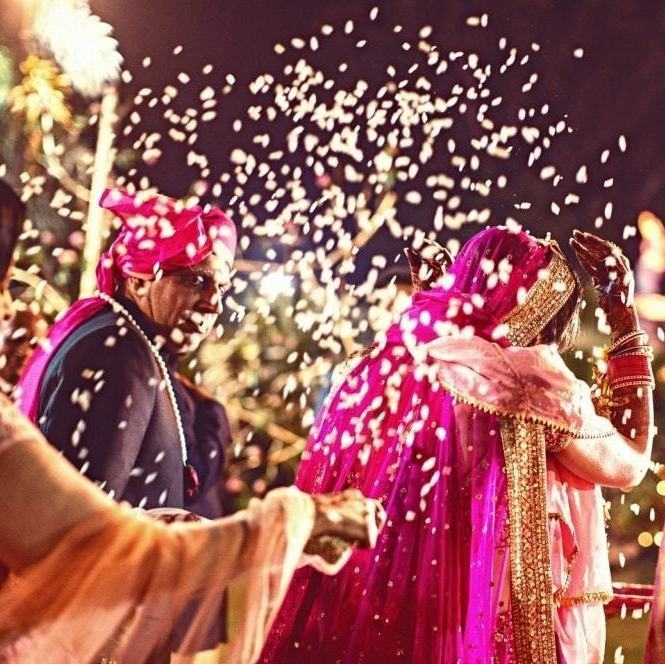Bidaai is one of the most emotional and visually striking moments of an Indian wedding. It is the time when the bride says goodbye to her parental home, her childhood, and the family that raised her. Amid the tears, hugs, and heartfelt blessings, one ritual stands out—the bride throwing puffed rice over her head toward her family. To the untrained eye, it might seem like a simple gesture, but this act carries deep cultural, spiritual, and symbolic meaning, woven intricately into centuries of Indian tradition.
At its core, the act of throwing rice is a symbol of gratitude. In Indian households, parents dedicate their lives to nurturing and caring for their children. By tossing puffed rice toward her home, the bride expresses a silent yet profound “thank you” to her parents and family for all their love, support, and sacrifices. It is her way of acknowledging that, although she is leaving physically, the emotional bond and respect remain unbroken. Every grain she throws is a representation of her love, respect, and appreciation for the nurturing environment that shaped her.
But the ritual is not only about gratitude—it is also about wishing prosperity and abundance. In Indian culture, rice has always symbolized wealth, sustenance, and prosperity. By scattering rice over her home during Bidaai, the bride is sending blessings of wealth, happiness, and long-lasting good fortune to her family. This gesture is meant to convey that, even as she begins a new life with her husband, she wants her parents and siblings to continue thriving and enjoying abundance in every aspect of life. It is a subtle but powerful way of ensuring that positive energy flows in every direction.
The ritual also carries spiritual significance. In Hindu beliefs, every action in a wedding has a deeper meaning. Throwing rice is not just symbolic for material prosperity—it is believed to send positive energy and blessings from one generation to another. The bride, through this act, channels her intentions and love toward her family, ensuring that her departure is not seen as a loss but as a continuation of harmony, love, and spiritual connection. Each rice grain becomes a tiny carrier of blessings, good wishes, and prayers for her parents’ well-being.
From a psychological perspective, the ritual serves an important purpose as well. The act of leaving one home and starting a new life is a major transition for both the bride and her family. The emotional intensity of this moment can be overwhelming. The simple act of throwing puffed rice helps in processing these emotions. It gives a tangible way to express feelings of love, gratitude, and longing. By performing this ritual, families can celebrate the transition, mark closure, and embrace the new beginning without leaving any emotions unexpressed.
The tradition also plays a significant role in cultural continuity. India’s rich tapestry of customs relies on small yet meaningful rituals to connect generations. The puffed rice ritual, passed down from ancestors, is more than a symbolic gesture—it is a reminder of the values that hold families together: gratitude, respect, love, and blessings. By practicing this ritual, families not only honor their heritage but also instill the significance of relationships and traditions in the next generation.
Interestingly, this ritual varies slightly across regions. While puffed rice is the most common, some families add flowers, coins, or a mixture of rice and flowers. No matter the variation, the essence remains unchanged—it is an act of love, a blessing, and a heartfelt farewell. Each region adds its unique touch, but the meaning—sending love, prosperity, and blessings from the bride to her family—remains universal.
In conclusion, the Bidaai ritual of throwing puffed rice is far more than a visual spectacle or a simple tradition. It is a beautiful interplay of emotions, culture, spirituality, and psychology. When a bride throws rice over her head, she is doing much more than saying goodbye—she is expressing gratitude, sending blessings, wishing prosperity, and keeping the spiritual connection with her family alive. It is a timeless gesture that reminds us how rituals, even in their smallest forms, carry profound meaning, honor relationships, and celebrate life’s transitions.
Bidaai, therefore, is not just a farewell—it is a celebration of love, blessings, and continuity. Every tear shed, every rice grain thrown, and every heartfelt word exchanged encapsulates the essence of family, culture, and the sacred bond that links past, present, and future.



